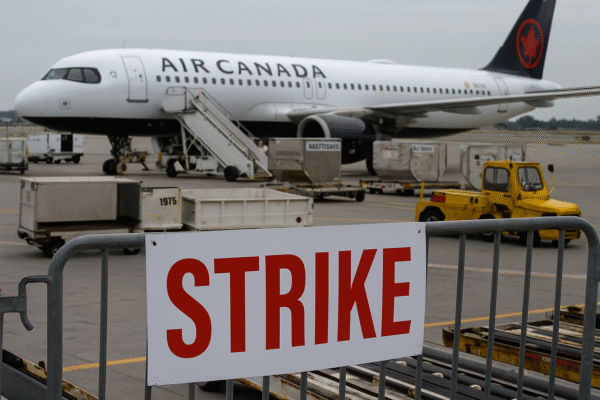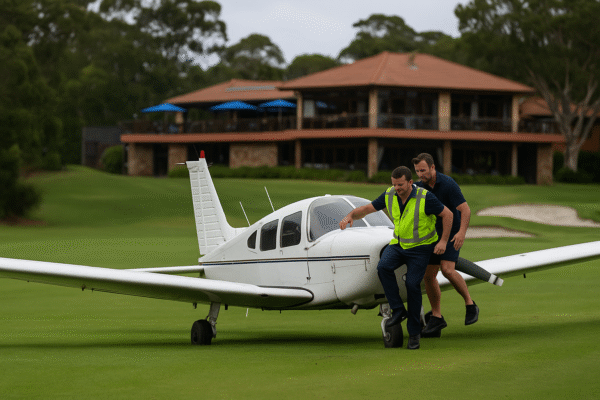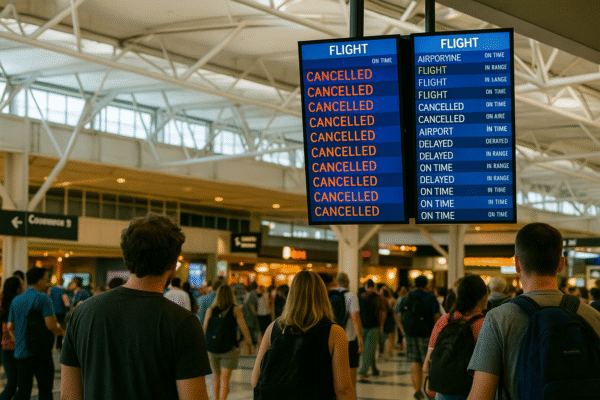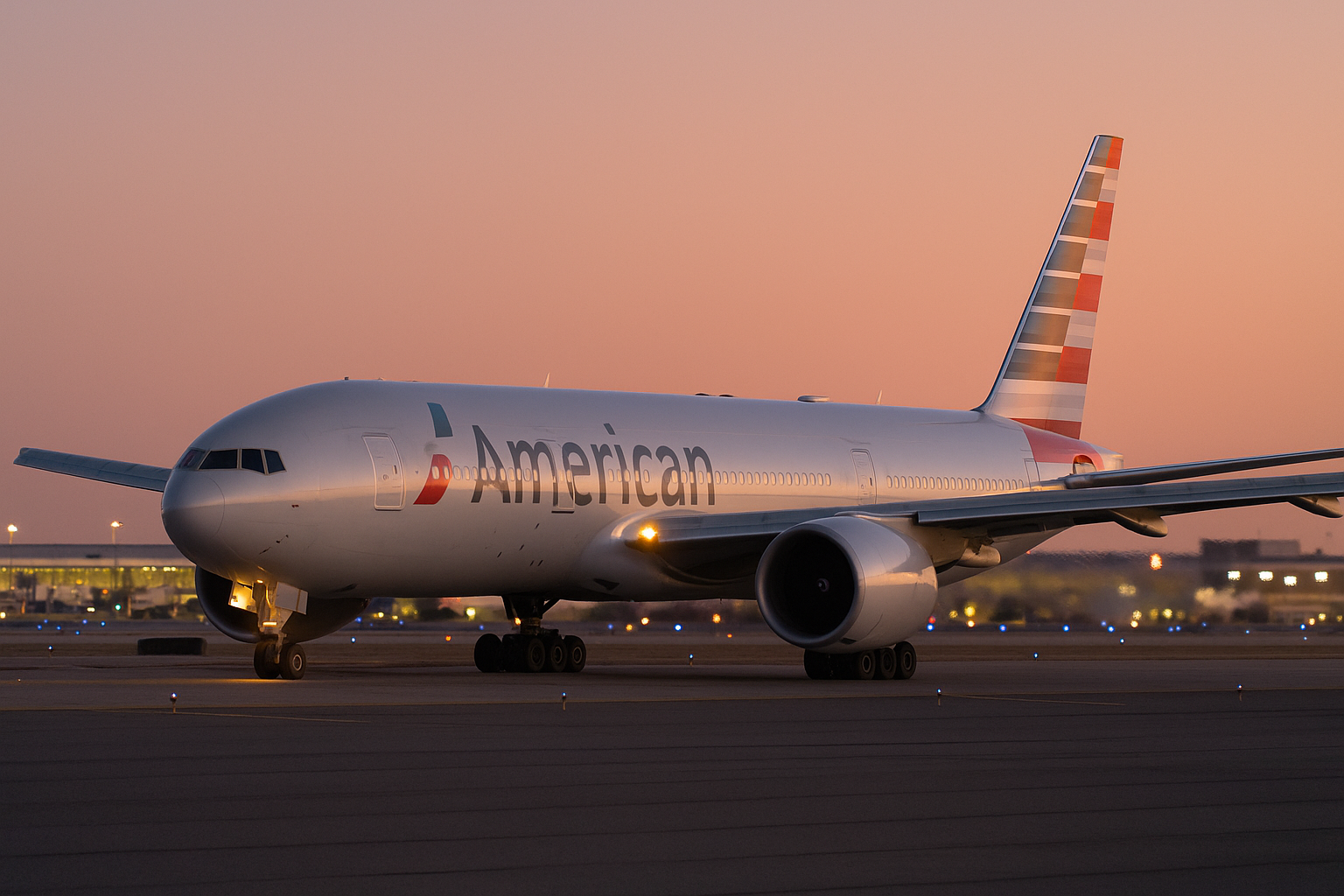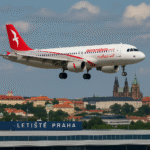A transatlantic American Airlines flight from New York to Paris made an emergency return to John F. Kennedy International Airport (JFK) on June 30, 2025, after a cabin pressurization system failure was detected mid-flight. Operating as Flight AAL44, the Boeing 777-223(ER) was en route to Paris Charles de Gaulle Airport when onboard monitoring systems alerted the crew to a malfunction in the right-side air-conditioning pack—an essential component for maintaining cabin temperature and air pressure on long-haul flights.
The incident occurred approximately three hours into the flight, as the aircraft cruised at an altitude of 37,000 feet near Nova Scotia’s airspace over the Atlantic Ocean. Flight radar data confirmed a sharp U-turn, as the pilots initiated a controlled diversion back to JFK in accordance with international aviation safety protocols. The wide-body jet touched down safely in New York at 9:06 PM local time, nearly three hours after its scheduled arrival in Paris.
Cabin Systems Prompt Emergency Return
The affected component, one of the two air-conditioning packs onboard, plays a critical role in regulating the aircraft’s internal atmosphere. While aircraft are designed to operate on a single functional pack in some scenarios, the crew, following standard operating procedures, opted to return to JFK as a precautionary measure to ensure passenger safety rather than continue over the Atlantic with reduced environmental control redundancy.
Earlier that day, the flight had already faced delays. Initially scheduled for a 5:30 PM departure, the aircraft only took off at 6:23 PM, following a series of operational setbacks. The planned arrival in Paris had been revised to 10:53 PM local time before the situation mid-flight led to the cancellation.
Upon arrival back in New York, passengers were safely deplaned without injuries. American Airlines maintenance crews conducted a full diagnostic inspection of the aircraft to determine the root cause of the malfunction. No passenger injuries were reported, and customer service teams began rebooking affected travelers on the next available flights to Paris and beyond.
Another Boeing 777 Diversion Highlights Safety Protocols
This incident follows another American Airlines wide-body flight diversion just days earlier. A Boeing 777-200ER operating between Athens and New York made an unscheduled landing at Bangor International Airport in Maine after flight crews identified a fuel imbalance affecting one of the engines. As a precaution, the right engine was shut down during flight, and the aircraft landed safely with no injuries. Subsequent inspection revealed a damaged fuel line, which was promptly replaced before the jet reentered service.
Both incidents underscore the unique challenges of managing long-haul operations over remote oceanic regions. With limited emergency landing options and long flight durations, aircraft flying transatlantic routes must rely heavily on in-flight diagnostic systems, well-trained crews, and rapid-response ground support teams to ensure safety.
Aviation Experts Applaud Swift Response and Protocol Compliance
According to aviation analysts, the proactive decision-making by the crew in both cases reflects the effectiveness of the aviation industry’s multi-layered safety architecture. “Any anomaly in a flight-critical system triggers immediate protocols. In both instances, the aircraft remained under control and the issues were managed efficiently without passenger harm,” noted a senior safety officer with the U.S. Federal Aviation Administration (FAA).
Modern wide-body aircraft like the Boeing 777 are equipped with sophisticated health monitoring systems capable of detecting potential faults before they escalate. Combined with rigorous crew training, these systems help minimize risks during extended flights over oceanic airspace, where time is of the essence in decision-making.
Rising Travel Demand Increases Pressure on Aircraft Reliability
The mid-air diversion comes at a time when international air travel is rebounding strongly post-pandemic. Transatlantic routes, especially between the U.S. and Europe, are witnessing near-record capacity in the summer 2025 season. Airlines like American are operating at high fleet utilization levels, which places increased emphasis on predictive maintenance, rapid diagnostics, and real-time fault detection technologies.
American Airlines reiterated its commitment to passenger safety, stating that “the aircraft’s return was in line with strict precautionary standards, and all passengers were accommodated accordingly.” The airline also confirmed that thorough maintenance checks were completed before the aircraft reentered service.
Travelers Rebooked and Compensation Offered
Passengers affected by the disruption were rebooked on alternative flights the following day, with American Airlines offering overnight accommodations and customer support. The airline’s operations team worked overnight to minimize disruption for international connections.
Under U.S. Department of Transportation (DOT) regulations, passengers facing significant delays due to airline-initiated diversions may be eligible for compensation, depending on circumstances and carrier-specific policies. American Airlines stated that it is “reviewing each case to ensure fair treatment for all impacted guests.”
Industry-Wide Focus on Preventive Maintenance and Safety
As global aviation continues its upward trajectory, particularly along transatlantic corridors linking North America and Europe, airlines are investing more heavily in predictive maintenance systems, enhanced crew training, and fail-safe operating procedures. The two American Airlines incidents highlight the aviation sector’s emphasis on addressing anomalies promptly and placing passenger safety at the core of all operational decisions.
In the words of a frequent transatlantic traveler deboarded from the flight: “I was frustrated at first, but once they explained the issue, I was glad the crew made the safer call. That’s what matters.”
For more travel news like this, keep reading Global Travel Wire




